Sleep Apnea
Uncompromised quality
We use quintessential quality materials and stringent sterilisation protocols to ensure that you don't have any medical or dental complications in future.
Anxiety Free Dentistry
Experience the treatment process in a pleasant atmosphere from handpicked expert clinicians, with unparalleled clinical etiquette, to ensure exemplary health care.
Best in class outcomes
We strive our best, so that we can keep our promise of delivering the individualized smiles that we have reimagined for you with latest techniques and technologies.
"Breathe Easy, Sleep Better: Discover Relief from Sleep Apnea at Kigo Dental!"
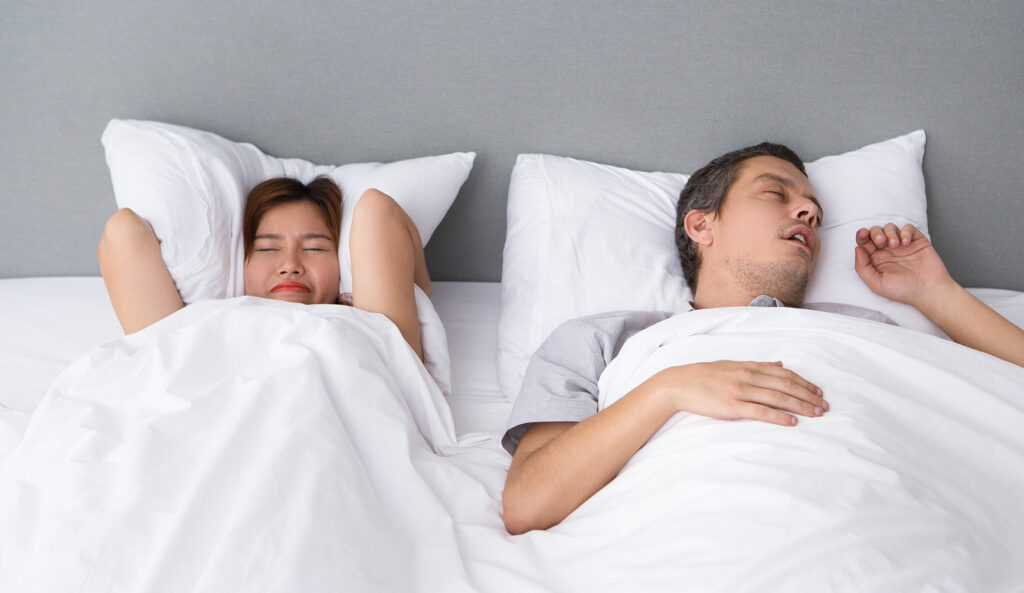

At Kigo Dental, we understand the significant impact that sleep apnea can have on your overall health and quality of life. That’s why we are proud to offer comprehensive orthodontic and dental treatments for sleep apnea, providing effective solutions to help you breathe easier and enjoy a restful night’s sleep.
Sleep apnea is a common sleep disorder characterized by interruptions in breathing during sleep. These interruptions can lead to daytime fatigue, snoring, and other serious health issues if left untreated. Our experienced team of dental professionals specializes in the diagnosis and treatment of sleep apnea, utilizing advanced techniques and innovative approaches to provide you with the relief you need.
During your initial consultation, our skilled orthodontists and dentists will conduct a thorough evaluation to determine the severity of your sleep apnea and identify any underlying factors contributing to the condition. We may utilize advanced diagnostic tools, such as sleep studies or imaging, to gather comprehensive information and develop a personalized treatment plan tailored to your specific needs.
At Kigo Dental, we offer a range of effective treatment options for sleep apnea. One common approach is the use of oral appliances, which are custom-fitted devices designed to reposition the jaw and keep the airway open during sleep. These appliances are comfortable, non-invasive, and highly effective in reducing sleep apnea symptoms.
In some cases, orthodontic treatments, such as braces or clear aligners, may be recommended to address underlying dental or skeletal issues that contribute to sleep apnea. Our orthodontic specialists will create a customized treatment plan to correct any misalignments, promote proper jaw positioning, and improve overall breathing function.
We understand that every patient’s needs are unique, and our team is dedicated to providing personalized care and support throughout your sleep apnea treatment journey. We will work closely with you, answering any questions you may have, and ensuring your comfort and satisfaction at every step of the process.
Don’t let sleep apnea disrupt your well-being and vitality. Take the first step towards a better night’s sleep by scheduling a consultation with our sleep apnea specialists at Kigo Dental today. Let us help you regain restful sleep, improve your overall health, and wake up refreshed and energized to embrace each day with renewed vigor.
Sleep apnea is a sleep disorder that can be caused by a variety of factors. There are two main types of sleep apnea: obstructive sleep apnea (OSA) and central sleep apnea (CSA), and their causes differ slightly.
Obstructive Sleep Apnea (OSA)
OSA is the most common form of sleep apnea, and it occurs when the muscles in the back of the throat fail to keep the airway open, causing breathing to repeatedly stop and start during sleep. Some of the causes of OSA include:
- Obesity: Excess body weight can cause fat to accumulate in the neck area, which can put pressure on the airway and make it more difficult to breathe.
- Large Neck Size: People with a larger neck circumference may be at increased risk of developing OSA because the extra tissue in the neck can narrow the airway.
- Smoking: Smoking can irritate the airway and cause inflammation, which can make it more difficult to breathe.
- Alcohol and Sedative Use: Alcohol and sedatives can relax the muscles in the throat, making it more difficult to keep the airway open.
- Structural Abnormalities: Some people are born with structural abnormalities in the jaw or throat, which can make it more difficult to breathe during sleep.
Central Sleep Apnea (CSA)
CSA is less common than OSA and occurs when the brain fails to signal the muscles that control breathing. Some of the causes of CSA include:
- Heart Failure: People with heart failure may develop CSA because their hearts are unable to pump enough blood to the body, including the brain.
- Stroke: A stroke can damage the part of the brain that controls breathing, leading to CSA.
- Brain Tumors: Tumors in the brain can interfere with the signals that control breathing, leading to CSA.
- Opioid Use: Opioid medications can depress the respiratory drive and cause CSA.
Sleep apnea is a sleep disorder that can cause a variety of symptoms. The symptoms of sleep apnea may vary depending on the severity of the condition, the type of sleep apnea, and other individual factors. Some of the most common symptoms of sleep apnea include:
Loud snoring: Snoring is a common symptom of sleep apnea, and it may be loud and disruptive.
Gasping or choking during sleep: People with sleep apnea may experience pauses in breathing during sleep, followed by gasping or choking sounds.
Daytime sleepiness: People with sleep apnea may feel excessively tired during the day, even if they slept for a full night.
Morning headaches: Sleep apnea can cause headaches in the morning, which may be caused by a lack of oxygen during sleep.
Difficulty concentrating: People with sleep apnea may have trouble focusing or staying alert during the day.
Mood changes: Sleep apnea can cause mood changes, including irritability, depression, and anxiety.
Restless sleep: People with sleep apnea may toss and turn during the night, or they may wake up frequently during the night.
Waking up with a dry mouth or sore throat: Sleep apnea can cause breathing through the mouth during sleep, leading to a dry mouth or sore throat in the morning.
Decreased sex drive: Sleep apnea can affect hormone levels and lead to a decreased sex drive.
Orthodontic treatment can be an effective option for treating sleep apnea, particularly for patients with mild to moderate cases. The goal of orthodontic treatment for sleep apnea is to reposition the jaws and teeth to improve the airway and reduce snoring and sleep apnea events.
One of the most common orthodontic treatments for sleep apnea is the use of a mandibular advancement device (MAD). A MAD is a custom-made oral appliance that is designed to be worn at night. The device holds the lower jaw and tongue in a slightly forward position, which can help to keep the airway open and reduce snoring and sleep apnea events.
Another option is orthodontic treatment with braces or clear aligners. Repositioning the teeth and jaws, these treatments can help to open up the airway and reduce snoring and sleep apnea events.
Orthodontic treatment is often used in combination with other treatments for sleep apnea, such as lifestyle changes, weight loss, or continuous positive airway pressure (CPAP) therapy. In some cases, orthodontic treatment may be used as a stand-alone treatment for mild to moderate cases of sleep apnea.
It is important to note that orthodontic treatment for sleep apnea is not suitable for everyone. Patients with severe sleep apnea may require more aggressive treatment options, such as surgery or CPAP therapy. Additionally, not all orthodontists are trained in treating sleep apnea with orthodontics, so it is important to find a provider with experience in this area.
The procedure for orthodontic treatment of sleep apnea typically involves a few different steps:
Consultation: The first step in orthodontic treatment for sleep apnea is typically a consultation with an orthodontist who is trained in treating sleep apnea. During the consultation, the orthodontist will evaluate the patient’s airway and discuss the patient’s symptoms and medical history to determine if orthodontic treatment is a suitable option.
Examination: If the orthodontist determines that orthodontic treatment is a suitable option for the patient, they will conduct a comprehensive examination of the patient’s teeth and jaws. This may involve taking X-rays, photographs, and impressions of the patient’s teeth and jaws.
Treatment planning: Based on the examination and evaluation, the orthodontist will create a treatment plan for the patient. This may involve the use of a mandibular advancement device, braces, clear aligners, or a combination of these treatments.
Device fabrication: If the orthodontist has recommended a mandibular advancement device, they will take impressions of the patient’s teeth and jaws and send them to a dental laboratory to have the device custom-made for the patient.
Treatment: Once the device is ready or braces/clear aligners are placed, the orthodontist will begin treatment. Patients will typically need to wear the device or orthodontic appliances at night while they sleep, and will need to attend regular follow-up appointments with the orthodontist to monitor their progress and make adjustments to the device or appliances as needed.
Follow-up care: Once treatment is complete, patients may need to continue to wear the mandibular advancement device or use retainers to maintain the position of the teeth and jaws. They will also need to attend regular follow-up appointments with their orthodontist to monitor their progress and ensure that the treatment remains effective.
There are several treatments available for sleep apnea, depending on the severity of the condition and the individual needs of the patient. Some of the most common treatments include:
Lifestyle modifications: Certain lifestyle changes may help to reduce the symptoms of sleep apnea, such as losing weight, avoiding alcohol and sedatives, quitting smoking, and sleeping on your side instead of your back.
Continuous positive airway pressure (CPAP) therapy: CPAP therapy involves wearing a mask over your nose and/or mouth during sleep, which delivers a continuous stream of air to keep your airway open.
Oral appliances: Custom-made oral appliances, such as mandibular advancement devices, can be used to reposition the jaw and tongue to help keep the airway open.
Surgery: In more severe cases of sleep apnea, surgery may be necessary to remove excess tissue from the throat or reposition the jaws to improve the airway.
Positional therapy: This treatment involves using devices or strategies to encourage the patient to sleep on their side instead of their back, which can help to reduce sleep apnea events.
Adaptive servo-ventilation (ASV): ASV is a form of positive airway pressure therapy that uses a machine to monitor the patient’s breathing and adjust the air pressure as needed.
Medications: Certain medications, such as modafinil, may be used to reduce daytime sleepiness in patients with sleep apnea.
Post-treatment Instructions
Following orthodontic treatment for sleep apnea, there are several post-treatment instructions that patients should follow to ensure the best possible treatment outcomes. These can include:
Follow-up appointments: Patients should attend follow-up appointments with their healthcare provider to ensure that the MAD is functioning properly and that any adjustments needed are made. During these appointments, patients may undergo additional testing to ensure that the treatment is effective.
Proper cleaning and maintenance: Patients should clean and maintain the MAD properly to prevent the buildup of bacteria and ensure the longevity of the device. They should follow the instructions provided by their healthcare provider for cleaning and storing the MAD.
Regular dental visits: Patients should continue to attend regular dental visits to monitor the health of their teeth and gums and to ensure that the orthodontic treatment is not causing any dental issues.
Lifestyle changes: Patients may need to continue making lifestyle changes to improve their sleep apnea symptoms and ensure the effectiveness of the orthodontic treatment. These can include maintaining a healthy weight, avoiding alcohol and sedatives before bed, and avoiding sleeping on their back.
Monitoring for complications: Patients should monitor for potential complications, such as changes in the bite or alignment of the teeth, and report any concerns to their healthcare provider.
Discontinuation of use: Patients should discontinue the use of the MAD and consult with their provider if they experience discomfort or pain while using the device
During orthodontic treatment for sleep apnea, patients should follow certain instructions to ensure the best possible treatment outcomes. These can include:
Proper use of MAD: Patients should follow the instructions provided by their healthcare provider for the proper use of the mandibular advancement device (MAD). This can include instructions on how to insert and remove the device, how to adjust the device, and how to clean and maintain the device.
Regular follow-up appointments: Patients should attend regular follow-up appointments with their healthcare provider to monitor the effectiveness of the orthodontic treatment and to make any necessary adjustments to the MAD.
Compliance with treatment: Patients should comply with the prescribed treatment plan and wear the MAD as instructed by their healthcare provider. This may involve wearing the device during sleep, for a certain number of hours per day, or as directed by the provider.
Monitoring for complications: Patients should monitor for potential complications, such as changes in the bite or alignment of the teeth, and report any concerns to their healthcare provider.
Communication with the provider: Patients should communicate openly with their healthcare provider about any issues or concerns they have with the treatment. This can help ensure that the provider can make any necessary adjustments to the MAD or provide additional support to the patient.
Lifestyle changes: Patients may need to make certain lifestyle changes to improve their sleep apnea symptoms and ensure the effectiveness of the orthodontic treatment. These can include maintaining a healthy weight, avoiding alcohol and sedatives before bed, and avoiding sleeping on their back.
Sleep apnea is a sleep disorder characterized by pauses in breathing or shallow breathing during sleep. While there are several known causes of sleep apnea, dental issues can also contribute to the development of this condition.
Here are some dental causes of sleep apnea:
Malocclusion: Malocclusion refers to a misalignment of teeth, which can affect the position of the jaw and airway. A misaligned jaw can narrow the airway and make it more difficult to breathe, leading to sleep apnea.
Large tonsils and adenoids: Tonsils and adenoids are located in the back of the throat and can block the airway during sleep, leading to sleep apnea. Dental professionals can identify enlarged tonsils and adenoids during an oral exam.
Temporomandibular joint disorder (TMJ): TMJ disorder is a condition that affects the jaw joint and can cause pain and discomfort. TMJ can also cause a misalignment of the jaw, which can contribute to sleep apnea.
Bruxism: Bruxism, or teeth grinding, can cause dental problems such as worn down teeth, cracked teeth, and receding gums. Bruxism can also cause the muscles in the jaw to become tight, which can lead to a misaligned jaw and contribute to sleep apnea.
Tongue position: The position of the tongue can affect the airway during sleep. If the tongue falls back into the throat, it can block the airway and contribute to sleep apnea.
While sleep apnea is typically diagnosed and treated by a medical doctor, there are some dental symptoms that may indicate the presence of this sleep disorder. Here are some dental symptoms that may be associated with sleep apnea:
Teeth grinding (bruxism): Bruxism is a common symptom of sleep apnea. The grinding and clenching of teeth during sleep can be caused by the body’s attempt to open the airway and improve breathing.
Dry mouth: Sleep apnea can cause dry mouth due to the increased breathing effort during sleep, which can lead to breathing through the mouth rather than the nose. This can also lead to a sore throat upon waking.
Gum disease: Studies have shown that individuals with sleep apnea are at a higher risk of developing gum disease. This may be due to the increased inflammation and stress on the body caused by sleep apnea.
Tooth decay: Sleep apnea can cause a decrease in saliva production, which can lead to an increase in tooth decay. Saliva helps to neutralize acid in the mouth and protect teeth from decay.
Temporomandibular joint (TMJ) pain: Sleep apnea can cause the muscles in the jaw to work harder to keep the airway open during sleep, which can lead to TMJ pain and discomfort.
While sleep apnea may require medical treatment, there are several lifestyle changes and preventive measures that may help reduce the risk of developing this sleep disorder. Here are some preventative measures for sleep apnea:
Maintain a healthy weight: Excess weight, especially around the neck and throat, can increase the risk of sleep apnea. Losing weight through a healthy diet and exercise may help reduce this risk.
Avoid alcohol and sedatives: Alcohol and sedatives can relax the muscles in the throat and increase the likelihood of airway obstruction during sleep. Avoiding these substances before bedtime may help reduce the risk of sleep apnea.
Change sleep position: Sleeping on the back can increase the risk of sleep apnea due to the weight of the tongue and soft tissues in the throat. Sleeping on the side may help reduce this risk.
Treat nasal congestion: Nasal congestion can make it more difficult to breathe through the nose, leading to mouth breathing and an increased risk of sleep apnea. Treating nasal congestion with nasal sprays, allergy medications, or other remedies may help improve breathing.
Practice good sleep hygiene: Establishing a regular sleep schedule, creating a comfortable sleep environment, and reducing screen time before bedtime may help improve sleep quality and reduce the risk of sleep apnea.
It’s important to speak with a medical doctor if you suspect you may have sleep apnea or are experiencing symptoms such as snoring, gasping for air during sleep, excessive daytime sleepiness, or morning headaches. A proper diagnosis and treatment plan can help improve sleep quality and overall health.
Sleep apnea can lead to several complications, both in the short term and over time. Here are some potential complications of sleep apnea:
Daytime fatigue: Sleep apnea can cause poor sleep quality, leading to excessive daytime sleepiness and fatigue, which can affect work performance, mood, and quality of life.
High blood pressure: Sleep apnea can cause high blood pressure or exacerbate existing hypertension due to the strain on the cardiovascular system caused by frequent pauses in breathing.
Cardiovascular disease: Sleep apnea has been linked to an increased risk of heart disease, stroke, and other cardiovascular problems due to chronic strain on the heart and blood vessels.
Type 2 diabetes: Sleep apnea has been linked to insulin resistance and glucose intolerance, which can increase the risk of developing type 2 diabetes.
Depression: Sleep apnea can lead to poor sleep quality, fatigue, and other symptoms that can contribute to the development of depression.
Poor quality of life: Sleep apnea can affect a person’s overall quality of life due to the impact on sleep quality, mood, and daytime functioning.
If left untreated, sleep apnea can lead to serious complications and health problems. It’s important to speak with a medical doctor if you suspect you may have sleep apnea or are experiencing symptoms such as snoring, gasping for air during sleep, excessive daytime sleepiness, or morning headaches. A proper diagnosis and treatment plan can help improve sleep quality and overall health.
There are several signs and symptoms that may indicate that you have sleep apnea. These include:
Loud snoring: Snoring is a common symptom of sleep apnea, especially if it is loud and disruptive.
Pauses in breathing during sleep: If you notice that you stop breathing or gasp for air during sleep, it could be a sign of sleep apnea.
Daytime fatigue: Poor sleep quality due to sleep apnea can cause excessive daytime sleepiness, fatigue, and a lack of energy.
Morning headaches: Waking up with headaches, especially in the morning, can be a symptom of sleep apnea.
Irritability or mood changes: Sleep apnea can cause mood changes, irritability, and difficulty concentrating due to poor sleep quality.
Restless sleep or insomnia: Sleep apnea can disrupt sleep, leading to restlessness or difficulty falling asleep or staying asleep.
High blood pressure or other cardiovascular problems: Sleep apnea has been linked to an increased risk of high blood pressure, heart disease, and stroke.
If you are experiencing any of these symptoms, it’s important to speak with a medical doctor or sleep specialist. They can help you determine if you have sleep apnea and recommend appropriate treatment options to improve your sleep quality and overall health. A sleep study may be necessary to diagnose sleep apnea.
FAQ's
Orthodontic treatment for sleep apnea involves the use of dental devices or braces to reposition the jaw or widen the airway, which can help to reduce or eliminate sleep apnea symptoms.
Orthodontic treatment for sleep apnea works by repositioning the jaw to improve the airway space. This can be done with a range of devices, including mandibular advancement devices (MADs), tongue-retaining devices (TRDs), and palatal expanders.
Orthodontic treatment can be an effective alternative to continuous positive airway pressure (CPAP) therapy, and may be more comfortable and convenient for some patients. It can also help to reduce or eliminate sleep apnea symptoms, leading to improved quality of life and reduced risk of complications.
Patients with mild to moderate sleep apnea who cannot tolerate other forms of treatment, such as CPAP therapy, may be good candidates for orthodontic treatment. It is also often recommended for patients who have an identifiable structural issue that is contributing to their sleep apnea, such as a narrow airway or a recessed jaw.
As with any medical procedure, there are some risks associated with orthodontic treatment for sleep apnea. These may include discomfort, irritation, or soreness in the mouth, changes in the bite, and difficulty speaking or swallowing. Patients should discuss the potential risks and benefits of treatment with their healthcare provider.
The length of treatment will vary depending on the severity of the sleep apnea and the specific treatment plan. In general, treatment can take several months to a few years to complete.
While orthodontic treatment can help to reduce or eliminate sleep apnea symptoms, it may not completely cure the condition. Patients may still need to make lifestyle changes or use other forms of treatment to manage their sleep apnea.
Orthodontist can play a key role in the management of sleep apnea by providing oral appliance therapy. These devices can be custom-made to fit the patient’s mouth and help keep the airway open during sleep.
An oral appliance is a device that is worn in the mouth during sleep to help keep the airway open. It is similar to a mouthguard and can be custom-made by a dentist to fit the patient’s mouth.
An oral appliance works by repositioning the lower jaw or tongue to help keep the airway open during sleep. This can help reduce snoring and improve sleep quality for patients with sleep apnea.
Yes, oral appliance therapy can be effective for treating mild to moderate sleep apnea. It is often used as an alternative to continuous positive airway pressure (CPAP) therapy, which some patients find uncomfortable or difficult to tolerate.
Oral appliances are not suitable for everyone. They may not be effective for severe cases of sleep apnea, and some patients may experience side effects such as jaw pain or bite changes. It’s important to consult with a dentist or sleep specialist to determine if an oral appliance is a suitable treatment option for your individual case.
Oral appliances must be custom-made by a dentist or orthodontist. A sleep study may be necessary to diagnose sleep apnea and determine the severity of the condition before an oral appliance can be prescribed.
In addition to oral appliance therapy, some dental treatments for sleep apnea may include orthodontic treatment or surgical procedures to correct physical abnormalities that are causing sleep apnea. These options are less common and may only be appropriate for certain patients. It’s important to discuss all treatment options with a medical doctor or sleep specialist.
Blogs
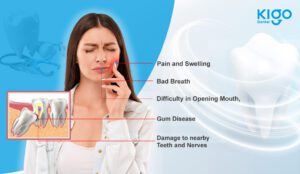





Wisdom Teeth: Understanding the What, Why, and When
Wisdom teeth, also known as third molars, are often a source of concern for many people. They can lead to various dental issues, including wisdom
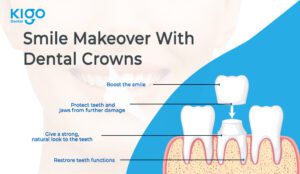





Smile Makeover with Dental Crowns: Types, Overview & cost
A smile is one of the most attractive features a person can have. It can boost your confidence, make you more approachable, and even improve






Beyond the smile: Exploring the crucial role of teeth in your overall health
Teeth are often linked to the ability to smile, eat, and express oneself. However, teeth serve many other vital purposes as well. Your teeth have
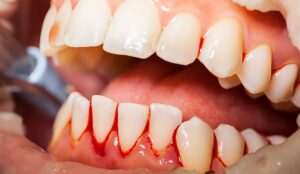





The Silent Threat: How Gum Diseases Lead to Tooth Loss
Having strong teeth and gums is a reflection of your entire well-being, not simply your appearance. Despite this, many people don’t give their gums the
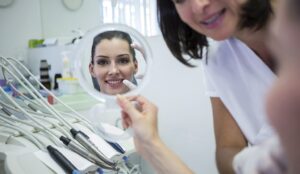





The Importance of Orthodontists in Clear Aligner Treatment: Avoiding Problems and Ensuring Successful Outcomes
More and more individuals are seeking out clear aligner treatment as a way to improve their smile in a way that is both subtle and






Understanding Abnormal Dental Habits in Children and the Importance of Control
As parents and caregivers, we play a pivotal role in shaping our children’s habits and behaviors, especially when it comes to their oral health. However,






Wisdom Teeth: Understanding the What, Why, and When
Wisdom teeth, also known as third molars, are often a source of concern for many people. They can lead to various dental issues, including wisdom






Smile Makeover with Dental Crowns: Types, Overview & cost
A smile is one of the most attractive features a person can have. It can boost your confidence, make you more approachable, and even improve






Beyond the smile: Exploring the crucial role of teeth in your overall health
Teeth are often linked to the ability to smile, eat, and express oneself. However, teeth serve many other vital purposes as well. Your teeth have






The Silent Threat: How Gum Diseases Lead to Tooth Loss
Having strong teeth and gums is a reflection of your entire well-being, not simply your appearance. Despite this, many people don’t give their gums the






The Importance of Orthodontists in Clear Aligner Treatment: Avoiding Problems and Ensuring Successful Outcomes
More and more individuals are seeking out clear aligner treatment as a way to improve their smile in a way that is both subtle and






Understanding Abnormal Dental Habits in Children and the Importance of Control
As parents and caregivers, we play a pivotal role in shaping our children’s habits and behaviors, especially when it comes to their oral health. However,






Wisdom Teeth: Understanding the What, Why, and When
Wisdom teeth, also known as third molars, are often a source of concern for many people. They can lead to various dental issues, including wisdom






Smile Makeover with Dental Crowns: Types, Overview & cost
A smile is one of the most attractive features a person can have. It can boost your confidence, make you more approachable, and even improve






Beyond the smile: Exploring the crucial role of teeth in your overall health
Teeth are often linked to the ability to smile, eat, and express oneself. However, teeth serve many other vital purposes as well. Your teeth have






The Silent Threat: How Gum Diseases Lead to Tooth Loss
Having strong teeth and gums is a reflection of your entire well-being, not simply your appearance. Despite this, many people don’t give their gums the






The Importance of Orthodontists in Clear Aligner Treatment: Avoiding Problems and Ensuring Successful Outcomes
More and more individuals are seeking out clear aligner treatment as a way to improve their smile in a way that is both subtle and






Understanding Abnormal Dental Habits in Children and the Importance of Control
As parents and caregivers, we play a pivotal role in shaping our children’s habits and behaviors, especially when it comes to their oral health. However,






Wisdom Teeth: Understanding the What, Why, and When
Wisdom teeth, also known as third molars, are often a source of concern for many people. They can lead to various dental issues, including wisdom






Smile Makeover with Dental Crowns: Types, Overview & cost
A smile is one of the most attractive features a person can have. It can boost your confidence, make you more approachable, and even improve






Beyond the smile: Exploring the crucial role of teeth in your overall health
Teeth are often linked to the ability to smile, eat, and express oneself. However, teeth serve many other vital purposes as well. Your teeth have






The Silent Threat: How Gum Diseases Lead to Tooth Loss
Having strong teeth and gums is a reflection of your entire well-being, not simply your appearance. Despite this, many people don’t give their gums the






The Importance of Orthodontists in Clear Aligner Treatment: Avoiding Problems and Ensuring Successful Outcomes
More and more individuals are seeking out clear aligner treatment as a way to improve their smile in a way that is both subtle and






Understanding Abnormal Dental Habits in Children and the Importance of Control
As parents and caregivers, we play a pivotal role in shaping our children’s habits and behaviors, especially when it comes to their oral health. However,






Wisdom Teeth: Understanding the What, Why, and When
Wisdom teeth, also known as third molars, are often a source of concern for many people. They can lead to various dental issues, including wisdom






Smile Makeover with Dental Crowns: Types, Overview & cost
A smile is one of the most attractive features a person can have. It can boost your confidence, make you more approachable, and even improve






Beyond the smile: Exploring the crucial role of teeth in your overall health
Teeth are often linked to the ability to smile, eat, and express oneself. However, teeth serve many other vital purposes as well. Your teeth have






The Silent Threat: How Gum Diseases Lead to Tooth Loss
Having strong teeth and gums is a reflection of your entire well-being, not simply your appearance. Despite this, many people don’t give their gums the






The Importance of Orthodontists in Clear Aligner Treatment: Avoiding Problems and Ensuring Successful Outcomes
More and more individuals are seeking out clear aligner treatment as a way to improve their smile in a way that is both subtle and






Understanding Abnormal Dental Habits in Children and the Importance of Control
As parents and caregivers, we play a pivotal role in shaping our children’s habits and behaviors, especially when it comes to their oral health. However,
LET'S TALK
Book your Appointment
Appointment Timings: Mon-sat: 10:00 am- 8:00 pm |
Sun: 10:00 am - 1:00 pm
Contact
We would love to be a part of your Smile Reimagining Journey...
- 2nd Floor, QUBE, Plot No: 3-64/A, Kavuri Hills Rd, Jubilee Hills, Hyderabad, Telangana 500033
-
+91 9998884398
- kigodental@gmail.com
-
Mon - Sat: 10:00 am - 8:30 pm
Sun: 10:00 am - 1:00 pm